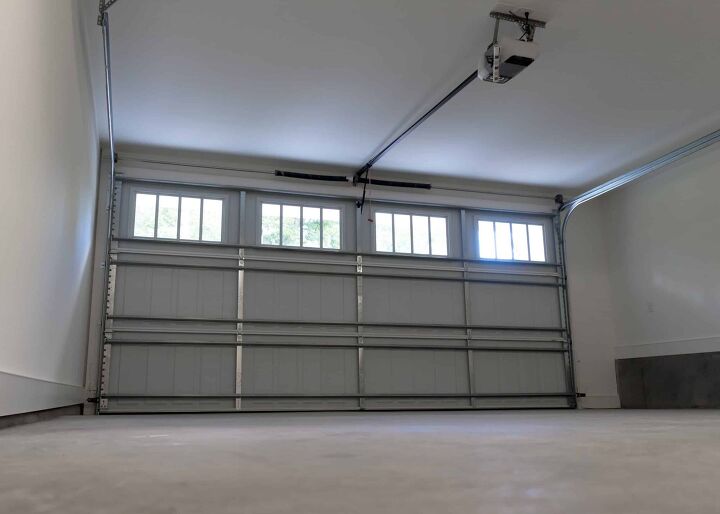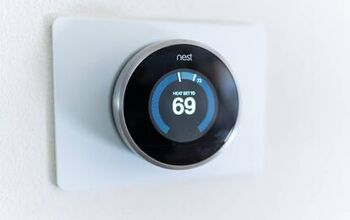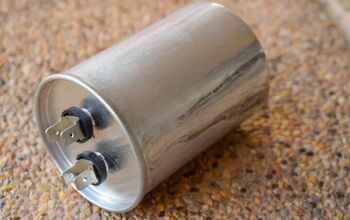Is Water Seeping Up Through Concrete Garage Floor? [Try This Fix]

You may begin to notice moisture building up on your garage floor. This process is known as “sweating” and it can be a real nuisance that can make your flooring a slipping hazard and even leave the other portions of the structure damp.
Understanding why your garage flooring “sweats” is important. While condensation is one of the most common culprits, there are a few reasons why your garage floor might be prone to having water seep up through the flooring.
Do You Need Concrete Foundation Repair Services?
Get free, zero-commitment quotes from pro contractors near you.

Why is the Garage Floor Wet?
It is important to note that there are times where water can come up through the slab of concrete in your garage. This isn’t the same as sweating, though it oftentimes gets misconstrued as the same thing. The most common reason for this is that the concrete doesn’t have a moisture barrier underneath it.
While we think of concrete as this dense, hard layer, it actually has a number of small spaces known as capillaries within it. The capillaries act similarly to a sponge in that they can absorb some of the moisture from the ground and distribute it through the concrete. Basements, which also have large slabs of concrete, can suffer from the same type of condition.
Of course, it could also be due to noticeable cracking in the concrete slab. When the ground becomes overly wet, those gaps can allow the water to seep in and eventually out through the top of your flooring.
What is Sweating?
The difference between a garage that is “sweating” and one with excess water coming up through the flooring is quite different. While all moisture may all seem the same, there can be noticeable differences in how it winds up there.
It can be a simple matter of the temperature outside. When the air gets warm, it will come into contact with the concrete, which is cool. If that contact cools the air in the garage below the dew point (the point where the air becomes totally saturated), it can create condensation on the concrete’s surface.
Think of it like this: when you bring a cold drink into warmer conditions, the container can begin to mist up and eventually start perspiring. When your garage sweats, it is the same concept. Sweating garages generally happen in the springtime and will generally happen in the areas that have fairly cold winters. Since the ground temperature is still cold in the spring, it keeps the concrete cool, which meshes with the warming air to create the sweating effect.
How to Test Your Flooring
Now that we know the difference between sweating and water that bleeds up through your concrete slab, it can be important to know how to determine one from the other. Sometimes, condensation can be thick enough that you aren’t certain what the issue is, and you’ll need to test for it.
Start by taping a 16-inch square piece of plastic down on the concrete while the surface is dry. Be certain that you seal off all of the edges and leave it there until the concrete starts to become moist and wet.
Take your plastic off and look at the concrete. If the concrete underneath of your patch is completely dry and the surrounding areas are wet, then your garage floor is sweating. But if the underside of the plastic swatch is wet while the surrounding areas are mostly dry, you have a problem with moisture coming up from underneath of the slab.
What to do if Your Concrete Flooring is Allowing Ground Moisture
If you have determined that your garage flooring has an issue with moisture seeping in from underneath, there are a few steps that you can take to remedy the issue. Keep in mind that it depends on the issue and the condition of your garage flooring; there may be no other recourse aside from calling in a professional to do the job.
While the water seeping in may not do any structural damage, it can leave anything in your garage damp, soggy, and damaged. The most ideal solution is to cut off the water flow and this can be achieved in a variety of ways.
Step One: Fill in Any Cracks
One of the most common culprits for water seeping up through your concrete garage flooring is that there are cracks in the flooring. While those small cracks may not seem like an issue, it is an invite for allowing groundwater in. Those cracks can be as small as a 1/8-inch wide but that is more than enough for water to get through.
You can use a concrete patching compound to do the job. They should be easily available at your local home improvement or hardware store and will generally come either pre-mixed or in a hard form that has to be mixed with water.
Clean the crack thoroughly first and then apply your patching compound using a trowel or putty knife. Give it the proper amount of time to dry so that it can create a water-resistant seal. If applied correctly, water that originated near the crack should dissipate and stop altogether. Do a thorough inspection of your garage flooring; cracks can appear in tough to see areas and remain a source for your water seepage even if you don’t notice it.
Step Two: Use a Sealing Concrete
Should you not notice any cracks but still have water seeping in through your garage flooring it could be due to the concrete being porous. To combat this, you will want to use a silicate-based sealant product. If you can’t find these at your local home improvement store, you can check with a local masonry retailer, too.
When you spread the sealant over the surface of your concrete flooring using a paintbrush or roller, it penetrates don into the small holes on the surface of the concrete. Those holes are just large enough that they allow water to seep in, causing wetness on your flooring.
Can You Stop a Garage Floor from Sweating?
The process of keeping your garage flooring from sweating may wind up being a little more difficult than it seems. Remember, you’re battling ground temperature, air temperature, and the physics behind condensation here.
Applying a coating or sealer will not stop sweating from occurring. Remember, sweating happens when the air drops below the dew point so it is isn’t an issue of sealing off any areas that may be letting in moisture.
So, how do you stop your garage floor from sweating? You have to change the conditions of the garage altogether.
Do You Need Concrete Foundation Repair Services?
Get free, zero-commitment quotes from pro contractors near you.

How to Stop Sweating on the Garage Flooring
If you want to make sure that your garage flooring doesn’t have issues with condensation, there are a few steps to be taken to combat this. The first is to decrease the humidity and dampness in the air. You may consider running a dehumidifier in your garage to help combat the buildup of moisture during the spring when the air is warm, and the ground is still cool. During the summer, when the ground starts to warm up, condensation should be quite as prevalent.
You can also increase the temperature of the air in the garage. This is easiest when there is little to no insulation in the garage and it can heat up with exposure to the sun. It also helps to keep your garage door – as well as any windows or man doors – not only closed, but properly sealed.
You can also try changing the surface of your garage flooring entirely. Concrete is porous and those small holes can be enough to let in trace amounts of moisture. Since there are so many of these holes in concrete, it can make the flooring look very damp and wet unless properly sealed or other conditions are met.
Lastly, you can try increasing the circulation of air in your garage. If the air that rests just above the surface can’t rest long enough to cool, it won’t have the chance to condense. Having a fan or two in your garage can keep the air circulating so that it doesn’t have the opportunity to settle or create condensation.
Related Guides

Ryan Womeldorf has more than a decade of experience writing. He loves to blog about construction, plumbing, and other home topics. Ryan also loves hockey and a lifelong Buffalo sports fan.
More by Ryan Womeldorf












![10 Best Scroll Saws for 2022 [Ultimate Reviews & Buyer's Guide]](https://cdn-fastly.upgradedhome.com/media/2023/07/31/9070684/10-best-scroll-saws-for-2022-ultimate-reviews-buyer-s-guide.jpg?size=350x220)











![Cost To Drill A Well [Pricing Per Foot & Cost By State]](https://cdn-fastly.upgradedhome.com/media/2023/07/31/9074980/cost-to-drill-a-well-pricing-per-foot-cost-by-state.jpg?size=350x220)


